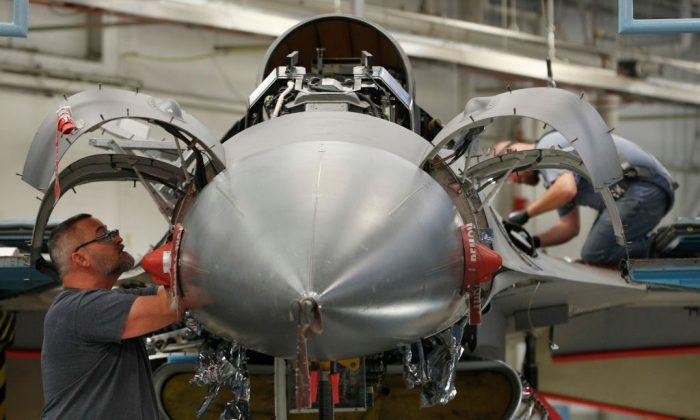‘Decade-Long Defense Upcycle’
The National Defense Authorization Act (NDAA) for 2017 provided a base Department of Defense (DOD) budget of $543 billion. The expected baseline budget figure for 2018 NDAA could reach $631.5 billion, above President Donald Trump’s requested budget.The Trump administration has prioritized defense spending and rebuilding the United States’ military by modernizing weapon systems, building infrastructure, and increasing readiness for warfare. This, coupled with a Republican majority in both chambers of Congress, provides strong positive momentum for companies in the defense industry going forward.
“In our view, we are still in the early stages of a decade-long defense upcycle,” wrote Bank of America analysts in a Jan. 17 research note on the defense industry. “Congress is supportive of 3-5% CAGR [compounded annual growth rate] in the overall US DOD budget on top of inflation with growth greater than that in the investment accounts.”
Picking Names
Unlike other sectors where investors tend to focus on a few specific names, defense contractors usually rise together. While government contracts tend to spread the wealth, there are a few companies that could stand to benefit more than others.
Orbital is a niche player but has grown rapidly due to its space capabilities. It makes rocket propulsion systems, satellites, and other systems and electronics involved in launching rockets. With Orbital in the fold, Northrop has a head start in the gradual weaponization of space.
General Dynamics diversifies its business by producing Gulfstream business jets, which has been a cash cow for the company in the civilian space.
Trump’s defense strategy of focusing on far-flung places such as Asia bodes well for continued naval spending.
“The US military focus has shifted to the Pacific, compared to the Middle East for the past decade, thus changing the US military requirements,” Bank of America wrote. That means more airplanes, ships, and submarines.
International Sales and Election Risk
The defense industry also benefits from expected spending increases from NATO countries and U.S. allies in East Asia, especially South Korea and Japan.Trump has called on NATO countries to increase their defense budgets. While only a few countries are expected to comply, defense spending in South Korea and Japan is likely to increase due to higher threat levels from North Korea and to keep up with China and Russia.
There is some uncertainty for the industry surrounding the U.S. midterm elections in 2018, which could derail the passage of a favorable budget. In addition, if midterm elections decrease or eliminate the majority of the Republican Party in the House or the Senate, the future growth of U.S. defense budget could be in doubt.






Friends Read Free